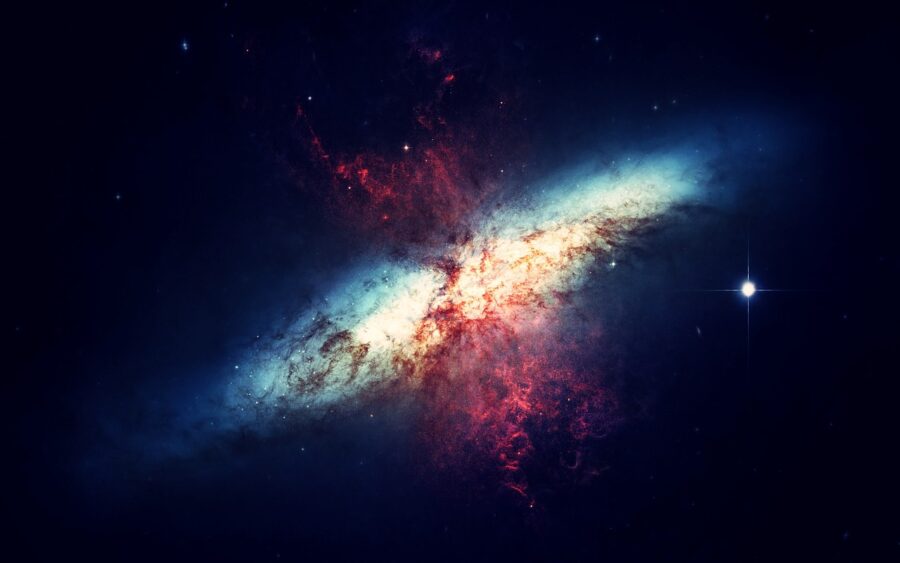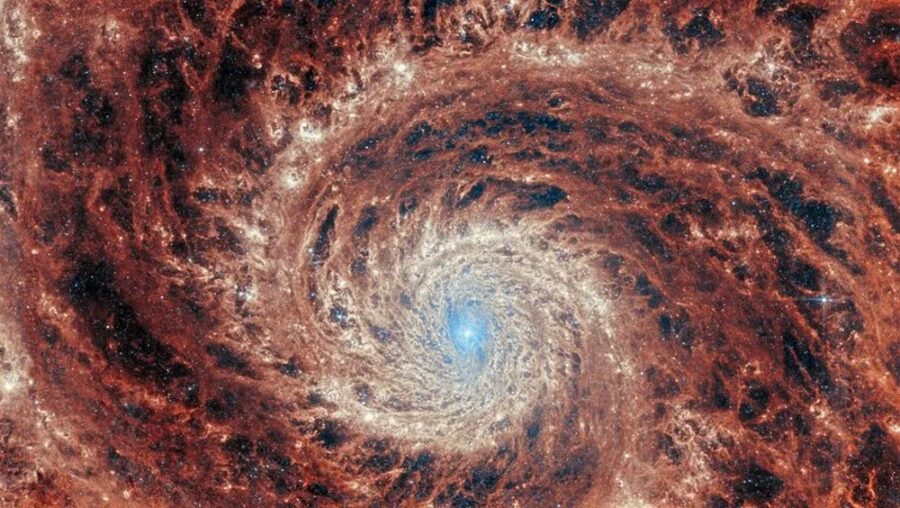Scientists Find Hidden Galaxy Wrapped In Cosmic Ribbon

Science Alert reported that the (relatively) nearby galaxy NGC 4632 may be more than it appears. While astronomers initially thought it was a pretty typical spiral galaxy, recent observations with radio telescopes revealed that the galaxy actually has a massive ring of gas that wraps around the galaxy at a steep incline. This means that NGC 4632 could actually be a much rarer type of galaxy known as a polar ring galaxy.
NGC 4632 is roughly 56 million lightyears away from our own Milky Way galaxy, which means we’re practically neighbors in galactic terms! So, why haven’t we discovered that NGC 4632 could be a polar ring galaxy before now? Well, it’s because the gas ring around the galaxy is invisible to most observations in the electromagnetic spectrum, and radio telescopes were the only way we were able to reveal its true nature.
While it’s true that finding a polar ring galaxy is incredibly rare, this recent discovery of NGC 4632’s gaseous ring means that these galaxies may not be quite as rare as astronomers initially assumed. Astrophysicist Nathan Deg of Queens University in Canada theorized about the findings that as many as one to three percent of nearby galaxies may have these polar rings, which would be much higher than the previous estimates.

Of course, this isn’t the first time one of these galaxies has been observed, but radio telescopes may help us find more of them than we could have with optical telescopes alone.
What Is A Polar Ring Galaxy?
A polar ring galaxy is a galaxy that has a ring made up of materials like gas, dust, and stars that orbit around the poles of that galaxy. While there isn’t an official explanation as to why this happens, there are two leading theories about the phenomenon. The first theory posits that the material travels through interstellar space and is pulled in by a galaxy’s orbit, causing it to become part of the galaxy.
The most commonly accepted theory for polar ring galaxy formation is that the material was from another galaxy that got close to the ring galaxy and was gravitationally pulled into it. Typically, lenticular and elliptical galaxies are the ones that become polar ring galaxies, which are the more unstructured galaxies you see in the universe. Compare them to the Milky Way, which has a clearer spiral structure.
While it’s true that finding a polar ring galaxy is incredibly rare, this recent discovery of NGC 4632’s gaseous ring means that these galaxies may not be quite as rare as astronomers initially assumed.
Through optical telescope observations, astronomers have been able to identify polar ring galaxy systems in roughly 0.5% of nearby lenticular galaxies. Clearly, there is some more searching to do that could reveal these invisible rings around other galaxies, like NGC 4632, that were once considered to just be relatively typical galaxies. Of course, astronomers are working to find out more about these rare galaxies as we speak.
This polar ring galaxy discovery was made by the Australian Square Kilometer Array Pathfinder radio telescope array, which was collecting data for the Widefield ASKAP L-band Legacy All-sky Blind surveY (WALLABY). As the WALLABY data collection project continues, astronomers will hopefully find more of these galaxies soon. This should reveal more about how these rings are formed and how these galaxies come to be.












